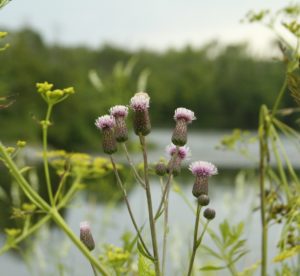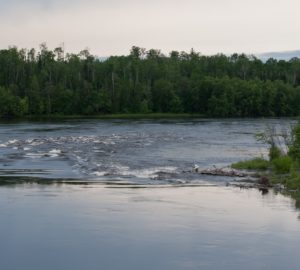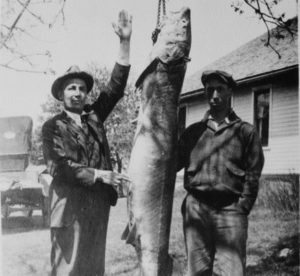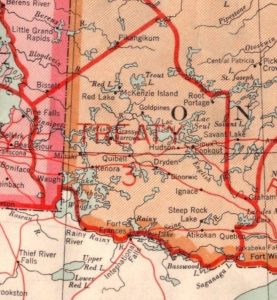Image: Photograph of Art Hunter teaching various members of the Kiinawin Kawindomowin Story Nations project about the Manitou Mounds at Kay-Nah-Chi-Wah-Nung. Christina Pasqua, 2019.
ONE DIARY, MANY STORIES:
STUDENT ESSAYS
The essays found on this page were written by students involved in the Story Nations project. These students drew on their visits to Manidoo Ziibi and additional research to produce the essays below, which explore the changing Rainy River environment since Du Vernet’s own journey there, as a consequence of persistent colonial influence. The published student essays reflect their own understandings as they engaged with the Kiinawin Kawindomowin Story Nations project.
 Ecology of Rainy River
Ecology of Rainy River
by Russell Turner
The District of Rainy River is categorized under the forest classification of Great Lakes-St. Lawrence Forest Region, which happens to be Canada’s second largest forest region.
 Water
Water
by Nancy Xue
Du Vernet’s diary is filled with rich descriptions of the Rainy River and the Lake of the Woods.
The water is described as “beautiful” and it is something that still “lives in [his] memory.”
 Resource Extraction along the Rainy River
Resource Extraction along the Rainy River
by Russell Turner
For thousands of years, Ojibwe have called the Rainy River District home. Traditional heritage, cultural sites, and educational activities are still alive and celebrated today.
 Treaty 3: Spirit and Intent
Treaty 3: Spirit and Intent
by Keith Garrett
The Indigenous peoples of Turtle Island (North America) made treaties with one another, both before and after the arrival of Europeans on the continent. Following contact, Indigenous peoples extended their treaty-making practices to include European nations.